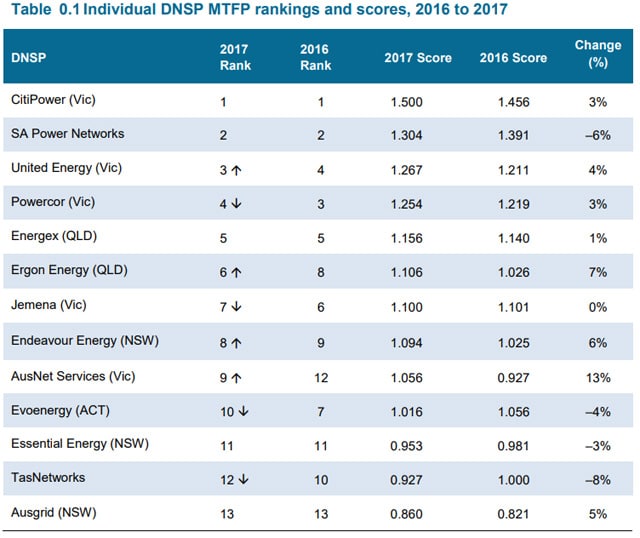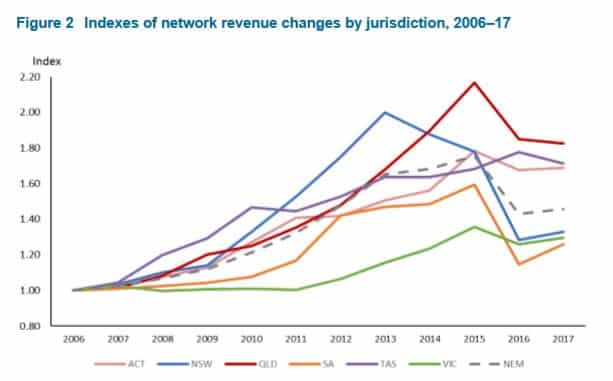A new Australian Energy Regulator (AER) report indicates that when electricity distribution networks improve productivity, electricity prices go down.
The fifth ‘Annual Benchmarking Report on Electricity distribution networks service providers’ shows distributors’ productivity grew 2.7 per cent on average in 2016-17 over the previous year.
An improvement in the distributors’ productivity reduces electricity costs to households and businesses, and also improves the reliability of the energy supply.
How electricity distribution networks fared in 2016-17
The report also shows which distributors are leading the way on efficiency. Victoria’s CitiPower ranked number 1 in 2016 and 2017.

However, AusNet (Vic) showed the highest productivity increase compared to the previous year, at 13 per cent.
However, after CitiPower, the most efficient provider in the National Energy Market was the SA Power Network.
The lowest ranked performers were Essential Energy (NSW), TasNetworks and Ausgrid (NSW).
AER Board member Jim Cox said distributors were now responding to the “strong incentives” the AER had put in place.
“We know the primary driver of these productivity gains have come from networks reducing their costs to maintain and operate their networks while at the same time improving reliability,” he said.
How electricity distribution networks productivity is measured
The productivity of a business improves when it delivers more outputs (product) relative to its inputs, such as its costs.
The AER says electricity distribution networks costs account for 30 to 40 per cent of customer bills. This includes the cost of high voltage transmission lines, transformers, electricity poles and wires. When these costs are lower, electricity bills go down; higher, and they go up.

The AER puts incentives in place for electricity distribution networks to improve the efficiency of their spending and in turn improve productivity.
Reducing prices through a home solar installation
While there is some good news in the report in terms of cost reductions and downward pressure on consumer bills, electricity prices remain high.
With a rooftop solar installation, however, you can generate your own electricity and become less subject to market price fluctuations. In addition, any excess unused solar power can be sold to the grid, reducing your costs still further.
And with a solar battery added to the mix, you can also store unused power for use at a later time.













































